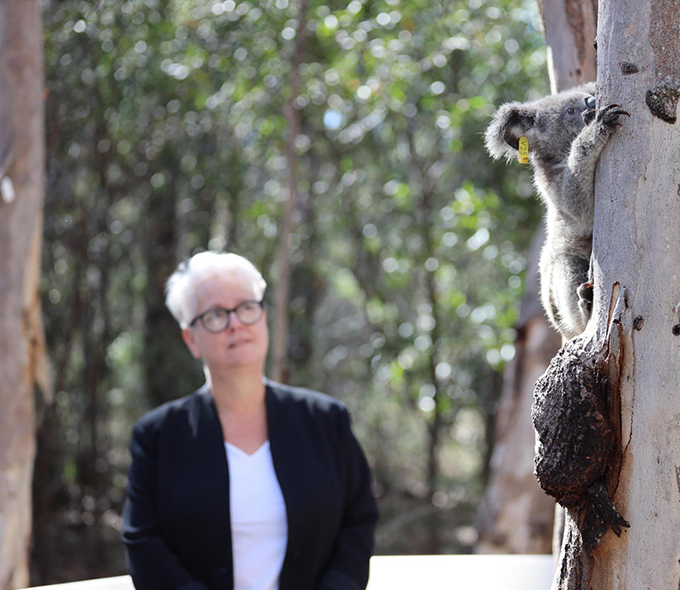Blue Mountains City Council’s Natural Area Management and Healthy Waterways teams
have claimed a significant victory in tackling a massive weed infestation at Glenbrook Lagoon and helping restore it to its former beauty.
Glenbrook Lagoon is a popular recreation space for locals who use it for bushwalking and canoeing. It is also home to several native species of water plants, fish, frogs, birds and turtles.
Urbanisation of the area has unfortunately led to the introduction of noxious weeds such as Cabomba (Cabomba caroliniana) and Mexican Water Lily Mexican Water Lily (Nymphaea Mexicana).
Cabomba is a submerged aquatic plant, which is listed as a Weed of National Significance in Australia due to its extremely detrimental impacts on the biodiversity and function of freshwater ecosystems, water quality and water storage. Cabomba was detected in Glenbrook Lagoon in the 1990s and by 2012 occupied nearly 100% of the site.
The Glenbrook infestation is one of only two known in the Sydney region, and the only one known in the entire Hawkesbury-Nepean Catchment area. The lagoon was ranked by the National Aquatic Weeds Manage¬ment Group in the top 10 strategic priority sites nation¬ally for control, due to the threat of spread to other important waterways such as the Hawkesbury-Nepean River.
In January 2023, Council teams and a bush regeneration contractor applied a new aquatic herbicide to treat weed infestations at Glenbrook Lagoon. Significant control of both weeds was achieved, with the reduction in surface Mexican Lily coverage visible in the attached aerial photo.
Blue Mountains Mayor, Cr Mark Greenhill, said: “I congratulate everyone involved in this worthwhile project to preserve the beauty and rich biodiversity at Glenbrook Lagoon. Sustainability is at the forefront of Council’s priorities for our community and this project is a shining example of that.”
While acknowledging that Cabomba is extremely difficult to eradicate, eradication remains the ultimate goal at Glenbrook Lagoon. This follows another of Council’s successes at the site with another notoriously difficult-to-eradicate weed, Salvinia molesta, after decades of active control by Council, has not been found at the lagoon since 2012.
In addition to directly controlling aquatic weeds at Glenbrook Lagoon, Blue Mountains City Council continues to implement a range of waterway and bushland restoration and monitoring programs at the site, including:
• Constructing biofiltration systems at all major stormwater outlets to the lagoon, to improve water quality in the waterbody and address one of the root causes of aquatic weed growth.
• Spring and autumn aquatic macroinvertebrate and water quality surveys to assess waterway health over time.
• Weekly summer enterococci testing (recreational water quality).
• Aquatic flora and fauna surveys.
• Land based weed control and bush regeneration in the surrounding reserve.
• Supporting a volunteer Bushcare group at the reserve.
• Running connect-with-nature activities with local schools.
• Building a floating ‘turtle island’ with Bushcare volunteers, to provide safe nesting sites for two native turtle species.
• Running sustainable living courses for catchment residents.
To find out more about what Council is doing to protect Blue Mountains waterways go to: bmcc.nsw.gov.au/waterways.
Photo: Aerial view of Glenbrook Lagoon before and after the weed reduction program was carried out. Credit: Nearmap.








